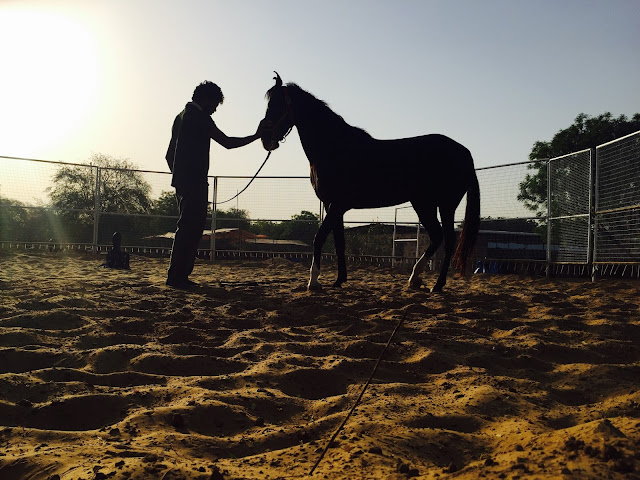Rockstar or the problems of anthropomorphising
Sometimes, good intentions have negative consequences.
Anthropomorphism is the act of attributing human characteristics or emotions to something that is not human, such as an animal, a plant or an object.
Since we view the world through the prism of who we are and what we know (the anthropologist in me is coming out of the closet) we naturally anthropomorphise the world around us and we start doing this from a very young age. It can often be very cute but sometimes, just sometimes, it can also be problematic. The most common example of problems caused by anthropomorphising are when we handle animals. If you ask any dog trainer, for example, they will tell you that the biggest barrier to efficient dog training is the dog owner anthropomorphising his dog. I would know, I do it all the time.
Rockstar is a 7 or 8 year old gelding (castrated male horse). He is from a rescue shelter. Apparently, he grew up from a small foal in a family where he was treated like a house pet. Foals are awfully cute and I can completely understand why kids would want it with them in the house, relaxing on the couch and living pretty much like their dogs. Thing is, like all animals (and humans too, for that matter) horses need boundaries. In a herd, horses tell each other what the boundaries are very clearly - sometimes by kicking.
Rockstar never learnt boundaries. He is very sweet but he will walk all over you, right into ‘your space’ as we call it. This can make for very dangerous situations especially given how big a horse is compared to a human. In this case, it can help to put a horse with a more dominating one. But when Rockstar first came to the farm he was kept with a group of mares and he was very rough with them. Since he never really learned to read signs and communicate with other horses he didn’t realise it when the dominant mare was trying to put him back in his place. As a result, the dominant mare felt he was even more dominating.
He doesn’t understand real boundaries either, such as fences. Once he was separated from the mares (because he was hurting them by being too dominant) he simply jumped over the fences. Eventually he had to be kept further away with high electric fences. On the first day he paced up and down. He was very agitated.
Our first goal to try and rectify the situation was to teach him to respect our space. The first few minutes were quite intense. Rockstar was running all over the place and literally running into us. He tried jumping over one of the wooden fence but it was too high. This was good, it meant he couldn’t escape and had to pay attention to us. From that point he started responding very well to our body language and we managed to keep his attention (most of the time). We also managed a Join up. I was astounded to see how his attitude suddenly changed. He was much calmer and much more respectful.
We decided to up the stakes and work him in a paddock adjacent to the mares’. In a few seconds we lost his attention completely. He jumped over a 1.5 m fence and ran to see the mares. We got him back and started all over again. Eventually we got him to calm down and pay more attention to us, even though he regularly kept an eye on the mares.
Rockstar running around the dam after jumping over the fence
Waiting to see whether Rockstar will come back on his own accord
Dylan bringing Rockstar back (without reins)
It’s quite a process but we will get there. Rockstar is very sweet. He was never mistreated so he isn’t deliberately dangerous or mean. Now it’s a matter of teaching him to respect leadership when he sees it.











Comments
Post a Comment